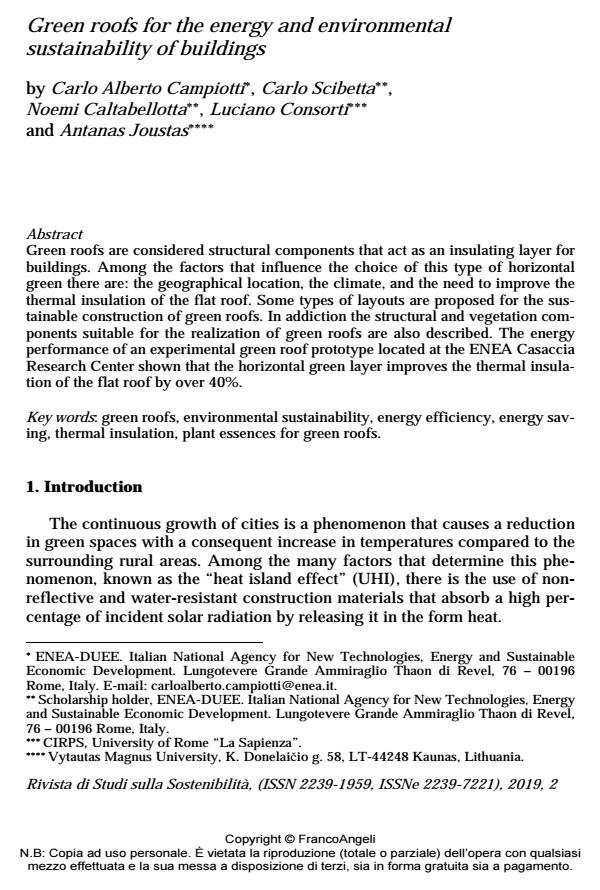Green roofs for the energy and environmental sustainability of buildings
Titolo Rivista RIVISTA DI STUDI SULLA SOSTENIBILITA'
Autori/Curatori Carlo Alberto Campiotti, Carlo Scibetta, Noemi Caltabellotta, Luciano Consorti, Antanas Joustas
Anno di pubblicazione 2020 Fascicolo 2019/2 Suppl.
Lingua Inglese Numero pagine 18 P. 27-44 Dimensione file 452 KB
DOI 10.3280/RISS2019-002-S1003
Il DOI è il codice a barre della proprietà intellettuale: per saperne di più
clicca qui
Qui sotto puoi vedere in anteprima la prima pagina di questo articolo.
Se questo articolo ti interessa, lo puoi acquistare (e scaricare in formato pdf) seguendo le facili indicazioni per acquistare il download credit. Acquista Download Credits per scaricare questo Articolo in formato PDF

FrancoAngeli è membro della Publishers International Linking Association, Inc (PILA)associazione indipendente e non profit per facilitare (attraverso i servizi tecnologici implementati da CrossRef.org) l’accesso degli studiosi ai contenuti digitali nelle pubblicazioni professionali e scientifiche
Green roofs are considered structural components that act as an insulating layer for buildings. Among the factors that influence the choice of this type of horizontal green there are: the geographical location, the climate, and the need to improve the thermal insulation of the flat roof. Some types of layouts are proposed for the sustainable construction of green roofs. In addiction the structural and vegetation components suitable for the realization of green roofs are also described. The energy performance of an experimental green roof prototype located at the ENEA Casaccia Research Center shown that the horizontal green layer improves the thermal insulation of the flat roof by over 40%.
Parole chiave:Green roofs, environmental sustainability, energy efficiency, energy saving, thermal insulation, plant essences for green roofs.
- Optimization of heat transfer coefficient in green roof modules based on life cycle carbon emissions Dengguo Wu, Zhengwen Wang, Jian Yang, Xiaojia Liu, Tao Wang, in Journal of Asian Architecture and Building Engineering /2025 pp.1
DOI: 10.1080/13467581.2025.2472715
Carlo Alberto Campiotti, Carlo Scibetta, Noemi Caltabellotta, Luciano Consorti, Antanas Joustas, Green roofs for the energy and environmental sustainability of buildings in "RIVISTA DI STUDI SULLA SOSTENIBILITA'" 2 Suppl./2019, pp 27-44, DOI: 10.3280/RISS2019-002-S1003